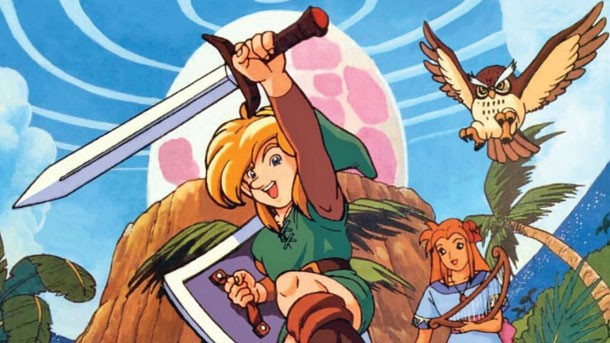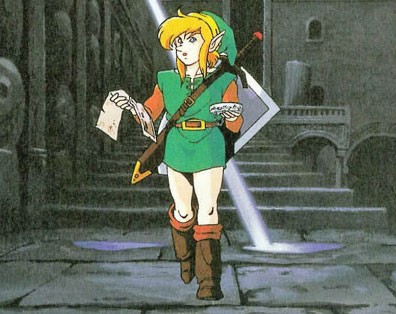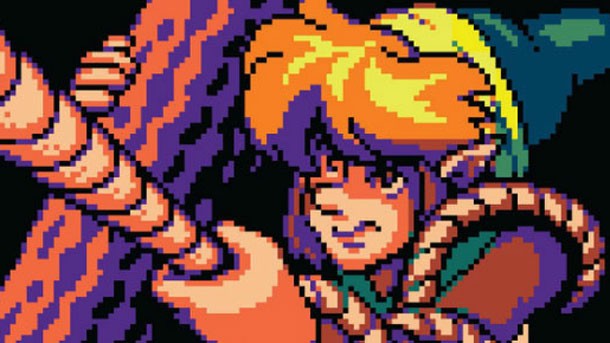Our extra-large special edition is here. Subscribe today and receive the 25% longer issue at no extra cost!
Looking Back At Zelda: Link’s Awakening With Its Director Takashi Tezuka

The Legend of Zelda is celebrating 30 years this year, which is as good a reason as any to look back at one of the stranger entries in the series: The Legend of Zelda: Link's Awakening. This feature originally appeared in issue 269 of Game Informer magazine.
Link’s Awakening for the Game Boy was more than just a handheld offshoot of a popular franchise. It established important Zelda staples in terms of story, humor, and a focus on character development that the series still uses to this day, all while carving an identity that remains distinct more than 20 years later.
Link’s Awakening was the first Zelda to feature fishing, allow Link to grab cuccos, and highlight musical instruments as more than just another item in Link’s inventory. The game also had extended side quests, like the mission to find all the secret seashells and a trading game with the world’s inhabitants. Link’s Game Boy adventure was a huge success for Nintendo, dramatically boosting handheld sales in 1993 and selling more than 5 million copies over its lifetime. It sits comfortably at number three on Game Informer’s top 25 Game Boy games of all time list, and also cracked the top 100 on our Top 200 Games of All Time list.
For players who grew up with the Game Boy instead of a home console, Link’s Awakening was the entry point into one of Nintendo’s most important and popular franchises. But in many ways the game was meant to be a strange love letter to the Zelda games that came before it. In an Iwata Asks interview with Nintendo – where the company’s late president and CEO Satoru Iwata shared stories with the creators of its most successful games – Link’s Awakening director Takashi Tezuka said that during development it felt like the team was making a parody of a Zelda game, as opposed to a true Zelda entry.
“When we say parody, I’m not sure where that word comes from because maybe there are translation issues,” Tezuka told us when we asked what he meant by that comment. “With Zelda games we usually plan them out, every detail is considered. With Link’s Awakening, we were working on that after our other work was done. Kind of like a club of people who loved Zelda and got together to make it. It has a different feeling for that reason.”

The original plan for Zelda’s first Game Boy adventure was to bring a modified version of Link to the Past to the handheld, but that idea fell by the wayside. Instead, Link’s Awakening started as an unsanctioned after-hours passion project for members of the Link to the Past team. “The main programmer wanted to challenge himself to create a Zelda experience on a portable system to see what he could do, and I was into the idea. We just had a passion to try and do something interesting,” Tezuka says. “We didn’t really have permission to do it necessarily. We were just playing around.”
It didn’t take long for the game to become more than an after-hours experiment. “Once we got it to a certain level of creation and completion that we wanted to show, then we took it to the company and got permission to continue developing it,” Tezuka says. “But initially it was just a little pet project of ours. Because we started it that way – just making a game we wanted to make – it may defy Zelda conventions. It might have interesting characters and situations we may not have had otherwise.”

At the time of development, Twin Peaks was at the height of its popularity. The show’s dreamlike world and focus on a small cast of characters in a small town were elements Tezuka wanted represented in the game. As a result, Link’s Awakening was one of the first Zelda games to have a stronger focus on story. Link built relationships with NPCs with more dialogue interactions, had extended conversations with Marin (the girl who found him washed up on shore after his boat crashed), and was guided along his journey periodically by an owl (who would later make an appearance in Ocarina of Time). “I wanted to make something that, while it would be small enough in scope to easily understand, it would have deep and distinctive characteristics,” Tezuka said during his Iwata Asks interview. Link’s Awakening was about more than just solving puzzles, fighting enemies, and saving Zelda. Koholint Island was far different from Hyrule, and its characters were charming and mysterious. This was why many callouts from other Nintendo games made their way in.
Link’s Awakening featured strange scenarios that served as the platform for cameos from Mario, Yoshi, and Kirby, as well as Mario enemies like goombas and chain-chomps. Reminiscing about the game with his boss during the Iwata Asks interview, Tezuka admitted he wasn’t even sure if he got official permission from Kirby’s creators, HAL Laboratory, to include him in the game.
Alongside Majora’s Mask, Link’s Awakening continues to be among the stranger entries in the Zelda series. With its Twin Peaks influences, myriad outside Nintendo references, strange characters, and surprise ending, the game stands out despite its limited visuals and smaller world. It was the first Zelda game for many young players, and will retain its legacy for years to come even as handheld gaming technology moves forward at a brisk pace.

Get the Game Informer Print Edition!
Explore your favorite games in premium print format, delivered to your door.
- 10 issues per year
- Only $4.80 per issue
- Full digital magazine archive access
- Since 1991









